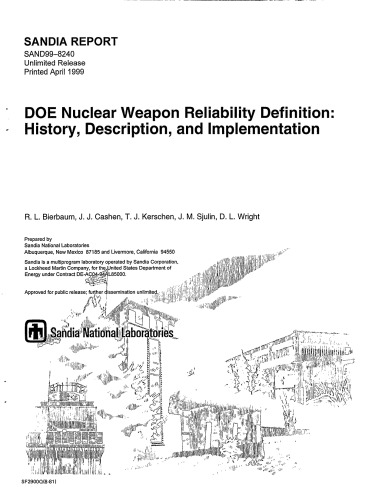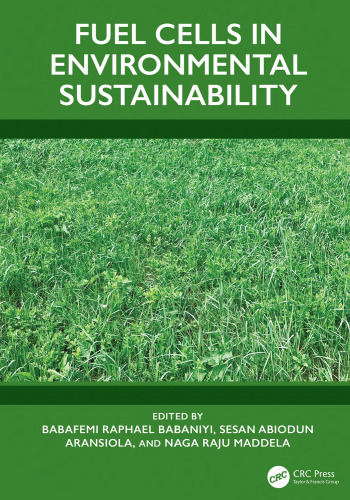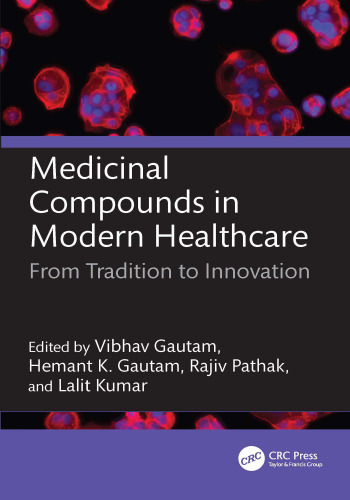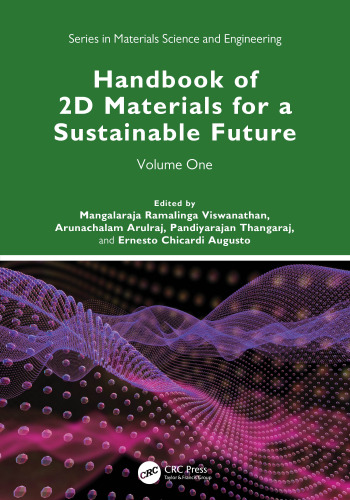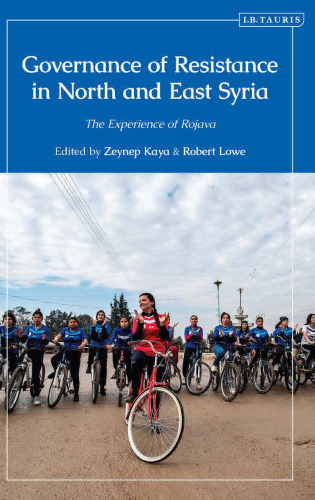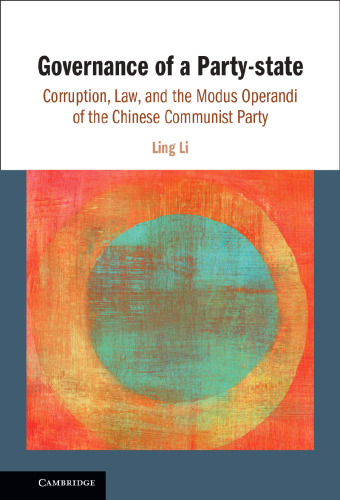Introduction This white paper is intended to provide insight into the current and Iong-standing DOE definition of nuclear weapon reliability, the historical and academic bases for this definition, the larger DoD use planning context for the DOE’s reliability metric, details of the elements of the definition, and historical evolution of uncertainty statements for DOE weapon reliability assessments. Current and future challenges in stockpile management provide the motivation for this paper. These include the following: (1) Our DoD customers need assurance that all DOE anomalies me being addressed clearly and completely. This drives a need for joint understanding of the reliability metric and what it encompasses. (2) It is imperative that a consistent approach be taken to assess the reliability/performance impact of all DOE anomalies to support decisions in a resource-constrained environment. This drives a need for clear and thorough documentation of the DOE weapon reliability definition. (3) Because of these resource constraints, the community may choose to tolerate anomalies in the stockpile rather than fix them. When resources were more pIentiful, reliability assessments based on limited information were considered acceptable in the decision process in some cases since the fixes could be done immediately. As resources are further constrained the reliability assessment is likely to become a more significant factor in deciding whether or not to fix the problem. Thus it will be increasingly important to have an accurate initial assessment of an anomaly, as well as a process for on-going data collection and reliability updates. (4) There is increased use of the word “reliability”, with various meanings, in today’s world. Programs such as Enhanced Surveillance are intended to complement the core surveillance program, but they often define reliability quite differently in order to reflect the objectives and scope of the specific program. For example, Enhanced Surveillance is often addressing “materials reliability”. Generally materials reliability is defined as the probability that a material or part meets a certain specification; this metric typically cannot be directly related to success or failure of a weapon subsystem or system. A clear understanding of what information is needed to perform weapon-level reliability analyses is essential for proper interpretation and integration of data and models obtained through Enhanced Surveillance and other reliability-related activities. (5) Because of the Comprehensive Test Ban Treaty, there is increased concern and scrutiny by DoD regarding the credibility of nuclear package performance assessments (reliability and yield). A consistent assessment and reporting process is needed that will instill and maintain confidence in DOE assessments. Any perception that known anomalies have not been assessed, or that reliability impacts are assessed without substantive engineering analysis, erodes credibility in current assessments and historical studies.
چکیده فارسی
مقدمه این مقاله سفید در نظر گرفته شده است تا بینشی در مورد تعریف فعلی و قدیمی DOE از قابلیت اطمینان سلاح هسته ای، مبانی تاریخی و آکادمیک برای این تعریف، زمینه برنامه ریزی استفاده از وزارت دفاع بزرگتر برای متریک قابلیت اطمینان DOE، جزئیات مربوط به عناصر تعریف و تکامل تاریخی اظهارات عدم قطعیت برای ارزیابی قابلیت اطمینان سلاح DOE. چالش های فعلی و آینده در مدیریت انبار انگیزه این مقاله را فراهم می کند. این موارد شامل موارد زیر است: (1) مشتریان وزارت دفاع ما نیاز به اطمینان دارند که همه ناهنجاریهای DOE به طور واضح و کامل رسیدگی میشوند. این امر نیاز به درک مشترک معیارهای قابلیت اطمینان و آنچه را که در بر می گیرد را تحریک می کند. (2) ضروری است که یک رویکرد منسجم برای ارزیابی تأثیر قابلیت اطمینان/عملکرد همه ناهنجاریهای DOE برای حمایت از تصمیمگیریها در یک محیط محدود به منابع اتخاذ شود. این امر نیاز به مستندات واضح و کامل از تعریف قابلیت اطمینان سلاح DOE را ایجاد می کند. (3) به دلیل این محدودیتهای منابع، جامعه ممکن است به جای رفع آن، ناهنجاریهای موجود در انبار را تحمل کند. هنگامی که منابع دلسوزتر بودند، ارزیابی قابلیت اطمینان بر اساس اطلاعات محدود در برخی موارد در فرآیند تصمیم گیری قابل قبول در نظر گرفته می شد زیرا اصلاحات می توانستند فوراً انجام شوند. از آنجایی که منابع محدودتر می شوند، ارزیابی قابلیت اطمینان احتمالاً به عامل مهم تری در تصمیم گیری در مورد رفع یا عدم رفع مشکل تبدیل می شود. بنابراین، داشتن یک ارزیابی اولیه دقیق از یک ناهنجاری، و همچنین فرآیندی برای جمعآوری مداوم دادهها و بهروزرسانیهای قابلیت اطمینان، بسیار مهم خواهد بود. (4) استفاده از کلمه «قابلیت اطمینان» با معانی مختلف در دنیای امروز افزایش یافته است. برنامه هایی مانند نظارت پیشرفته برای تکمیل برنامه نظارتی اصلی در نظر گرفته شده است، اما آنها اغلب قابلیت اطمینان را کاملاً متفاوت تعریف می کنند تا اهداف و دامنه برنامه خاص را منعکس کنند. به عنوان مثال، نظارت پیشرفته اغلب به «قابلیت اطمینان مواد» می پردازد. به طور کلی قابلیت اطمینان مواد به عنوان احتمال اینکه یک ماده یا قطعه دارای مشخصات خاصی باشد تعریف می شود. این معیار معمولاً نمی تواند مستقیماً با موفقیت یا شکست یک زیرسیستم یا سیستم سلاح مرتبط باشد. درک روشنی از اطلاعات مورد نیاز برای انجام تجزیه و تحلیل قابلیت اطمینان در سطح سلاح برای تفسیر و ادغام صحیح داده ها و مدل های به دست آمده از طریق نظارت پیشرفته و سایر فعالیت های مرتبط با قابلیت اطمینان ضروری است. (5) به دلیل معاهده ممنوعیت جامع آزمایش، نگرانی و بررسی دقیق وزارت دفاع در مورد اعتبار ارزیابی های عملکرد بسته هسته ای (قابلیت اطمینان و بازده) افزایش یافته است. یک فرایند ارزیابی و گزارش دهی منسجم مورد نیاز است که باعث ایجاد و حفظ اعتماد به ارزیابی های DOE شود. هرگونه تصوری مبنی بر اینکه ناهنجاری های شناخته شده ارزیابی نشده اند، یا اینکه اثرات قابلیت اطمینان بدون تجزیه و تحلیل مهندسی اساسی ارزیابی می شود، اعتبار در ارزیابی های فعلی و مطالعات تاریخی را از بین می برد.
ادامه ...
بستن ...
